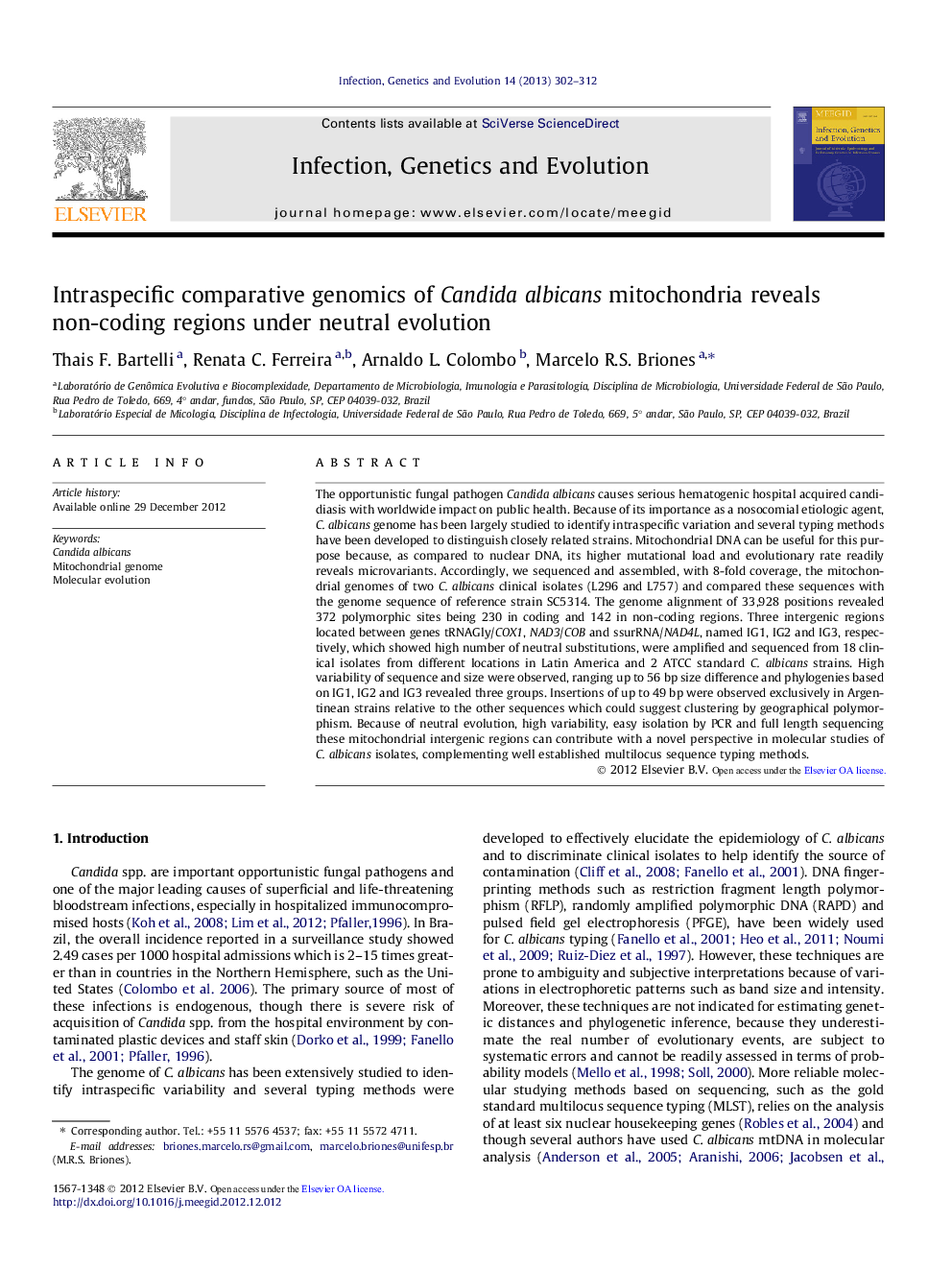| Article ID | Journal | Published Year | Pages | File Type |
|---|---|---|---|---|
| 5910938 | Infection, Genetics and Evolution | 2013 | 11 Pages |
The opportunistic fungal pathogen Candida albicans causes serious hematogenic hospital acquired candidiasis with worldwide impact on public health. Because of its importance as a nosocomial etiologic agent, C. albicans genome has been largely studied to identify intraspecific variation and several typing methods have been developed to distinguish closely related strains. Mitochondrial DNA can be useful for this purpose because, as compared to nuclear DNA, its higher mutational load and evolutionary rate readily reveals microvariants. Accordingly, we sequenced and assembled, with 8-fold coverage, the mitochondrial genomes of two C. albicans clinical isolates (L296 and L757) and compared these sequences with the genome sequence of reference strain SC5314. The genome alignment of 33,928 positions revealed 372 polymorphic sites being 230 in coding and 142 in non-coding regions. Three intergenic regions located between genes tRNAGly/COX1, NAD3/COB and ssurRNA/NAD4L, named IG1, IG2 and IG3, respectively, which showed high number of neutral substitutions, were amplified and sequenced from 18 clinical isolates from different locations in Latin America and 2 ATCC standard C. albicans strains. High variability of sequence and size were observed, ranging up to 56Â bp size difference and phylogenies based on IG1, IG2 and IG3 revealed three groups. Insertions of up to 49Â bp were observed exclusively in Argentinean strains relative to the other sequences which could suggest clustering by geographical polymorphism. Because of neutral evolution, high variability, easy isolation by PCR and full length sequencing these mitochondrial intergenic regions can contribute with a novel perspective in molecular studies of C. albicans isolates, complementing well established multilocus sequence typing methods.
⢠Candida albicans mtDNA is ideal for differentiation of closely related strains. ⢠Closely related strains are common in hospital acquired infection outbreaks. ⢠Genome sequencing revealed 372 polymorphisms (230 coding/142 non-coding). ⢠Intergenic variability ranges up to 56 bp and phylogenies revealed three groups. ⢠Insertions of 49 bp exclusively in Argentinean strains suggesting geographical marker.
